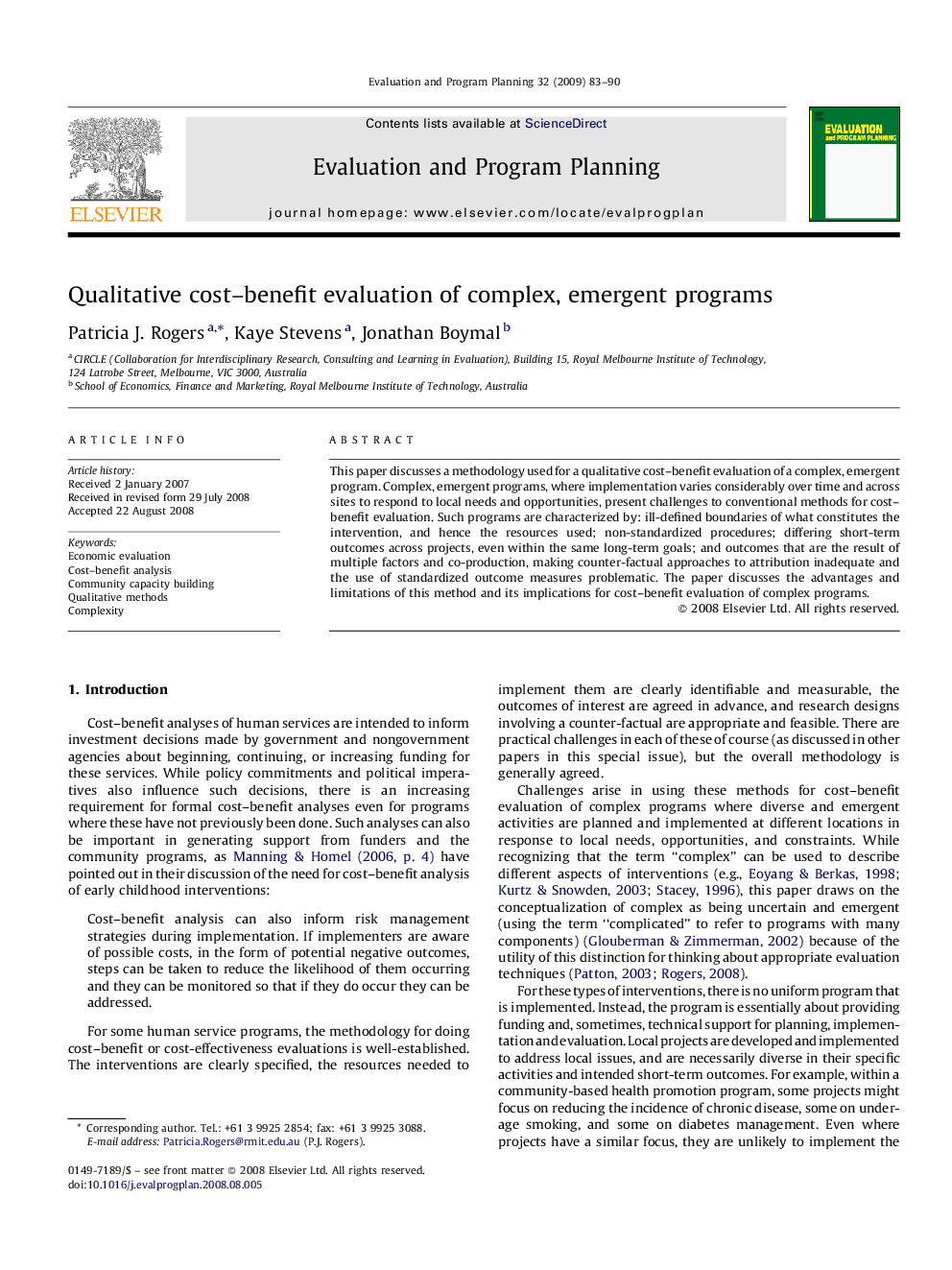| Article ID | Journal | Published Year | Pages | File Type |
|---|---|---|---|---|
| 322388 | Evaluation and Program Planning | 2009 | 8 Pages |
This paper discusses a methodology used for a qualitative cost–benefit evaluation of a complex, emergent program. Complex, emergent programs, where implementation varies considerably over time and across sites to respond to local needs and opportunities, present challenges to conventional methods for cost–benefit evaluation. Such programs are characterized by: ill-defined boundaries of what constitutes the intervention, and hence the resources used; non-standardized procedures; differing short-term outcomes across projects, even within the same long-term goals; and outcomes that are the result of multiple factors and co-production, making counter-factual approaches to attribution inadequate and the use of standardized outcome measures problematic. The paper discusses the advantages and limitations of this method and its implications for cost–benefit evaluation of complex programs.
